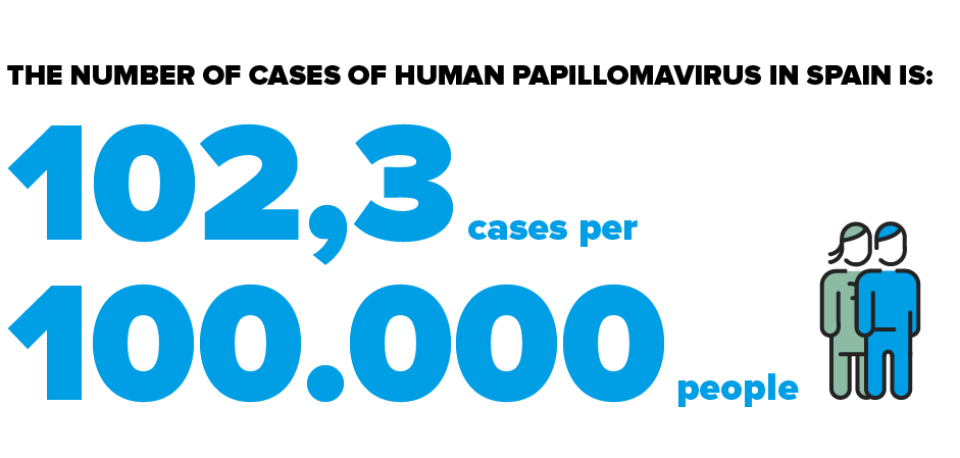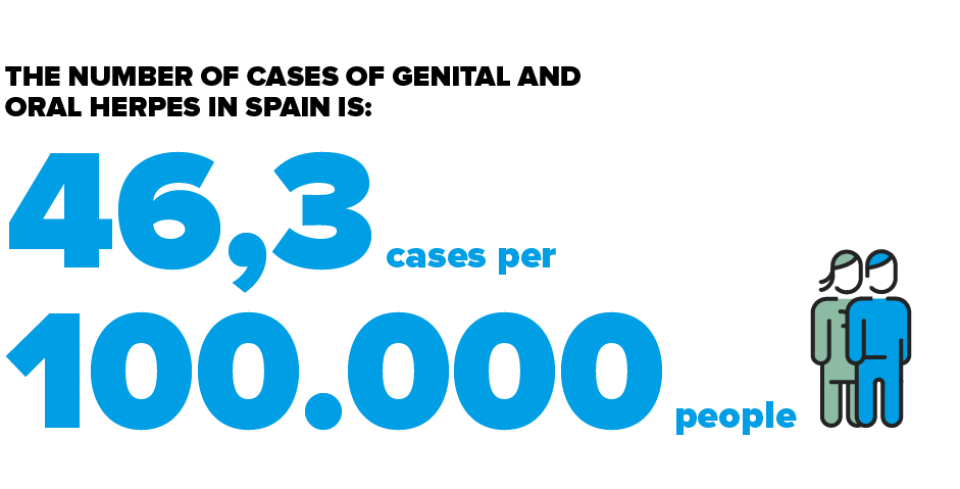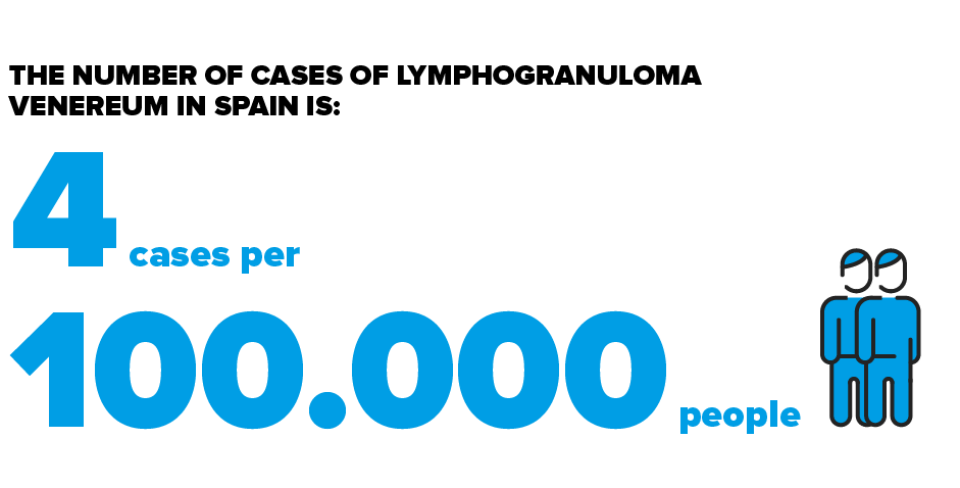What are Sexually Transmitted Infections?
Sexually transmitted infections are infections acquired while practicing unprotected sexual intercourse with an infected person. Some examples are HIV, syphilis, papillomavirus, gonorrhoea and hepatitis, amongst others. The incidence of sexually transmitted infections has increased in recent years, particularly in young adults and men who have sex with men.
Sexually Transmitted Infections explained in first person
People are not as frightened of contracting HIV any more, and this means a lot of them are no longer taking precautions, and are not using barrier methods any more when they have sex. This has clearly increased other sexually transmitted infections.
Sexually transmitted infections or diseases (STIs/STDs) are illnesses caused by microorganisms transmitted between people, primarily through skin/mucous membrane–skin/mucous membrane contact or through fluid exchange during sexual intercourse.
STIs are provoked by different types of microorganisms: yeasts, bacteria, viruses and parasites.
Some STIs mainly affect the genitals but they may also affect other areas such as the anal and perianal region or the mouth. Furthermore, there are other STIs that can spread and affect other organs.
It is important to realise that several of these infections can go unnoticed, particularly at the onset, and some of them may become chronic or have permanent consequences.
Are sexually transmitted infections very common?
In recent years, the overall incidence of sexually transmitted infections in our society has increased due to several factors:

A decline in the use of protective measures during sexual intercourse. Modern treatments have increased the life expectancy for HIV patients and this has reduced the fear of becoming infected; consequently the general population tend to take less precautions.
An increase in the use of new technologies to find sexual partners (mobile applications, chats, etc.). These technologies facilitate sexual activity with unknown or anonymous partners and the possibility of having sex with several partners simultaneously.

An increase in drug consumption. Sexual intercourse under the effects of certain drugs hampers one’s control over the protective measures required to prevent infection.

An increase in the mobility of people from different backgrounds with no access to diagnosis, treatment or preventative measures.

An increase in sexual tourism.
How many people does Sexually Transmitted Infections affect?
Papillomavirus
Human papillomavirus (HPV) is the most common STI worldwide, and also in Spain. Estimates indicate that over 40% of adults in the US are infected with papillomavirus, although in most cases the infection goes undetected and clears spontaneously within a few months. The number of HPV diagnoses has remained stable in recent years.
Genital and oral herpes.
These infections have also increased in recent years. The infection commonly passes undiagnosed and therefore unregistered which makes data unreliable. It is calculated that between 10% and 20% of the population in the US are infected with type 2 herpes virus (the strain most commonly found affecting the genitals). In Spain, recent studies estimated there are 46.3 cases in every 100,000 inhabitants.
Gonorrhoea
There were 89,239 cases of gonococcal infection diagnosed across Europe in 2017. That represents an overall rate of 22.2 new cases per 100,000 inhabitants. Almost half (47%) of those diagnosed were men who have sex with men. The number of new cases had increased by 30% in all patient groups compared to 2013.
Chlamydia
Genital Chlamydia trachomatis is the most common sexually transmitted infection throughout Europe. As many as 409,646 new cases were reported in 2017 at a rate of 146 cases per 100,000 inhabitants. Chlamydia often courses without presenting any symptoms, so it is believed that the number of cases could be much higher. Two thirds (62%) of all cases are reported in people aged under 25 years, most of whom are women.
Syphilis
The incidence of syphilis has been on the increase in Europe since 2010. As many as 33,189 new cases were reported in 2017 at a rate of approximately 7.1 in every 100,000 inhabitants. Six times more men have syphilis than women. The main group affected (almost two thirds of cases, 67%) are men who have sex with men and the majority of cases are diagnosed in people aged over 25 years.
HIV
In 2017, almost 25,353 people in Europe were diagnosed with HIV infection, with a rate of approximately 6 cases per 100,000 inhabitants. In Spain, it is estimated that the HIV rate (2015 data) is approximately 9 cases per 100,000 inhabitants.
The majority of people diagnosed with HIV in 2017 were men (75%) and the highest proportion of all new diagnoses (38%) were attributed to Men who have Sex with Men (MSM). 33% of the diagnoses were heterosexual and 4% in people using infected drugs. Almost half of the new diagnoses are made late. The global number of AIDS cases has continued to decrease steadily thanks to the increasing use of antiretroviral treatments.
Lymphogranuloma venereum
The European Union registered 1.989 new diagnoses of lymphogranuloma venereum in 2017. Four countries (France, the Netherlands, Spain and the United Kingdom) accounted for 86% of the reported cases. Virtually all cases involved men who have sex with men; 64% of patients were also HIV positive. The number of cases reported decreased in 2016. This has been the first reduction in the number of cases since 2009. Spain is one of the countries in which the number of cases has increased compared to previous years.
Hepatitis B
Hepatitis B is a viral liver infection that can give rise to either an acute problem or a chronic disease. Globally, calculations indicate it affects 5 in every 100 people, but this rate varies according to the country. It is believed that between 2 and 8 in every 100 inhabitants are infected in Spain.
Hepatitis C
As with hepatitis B, hepatitis C can develop into a chronic disease. There are estimated to be between 130 and 150 million people worldwide with chronic hepatitis C infection. Roughly 1–3 individuals per 100 have been in contact with this disease in Spain. The sexual transmission of this infection has increased in recent years and it mainly affects men who have sex with men.
Hepatitis A
Due to its transmission route (faecal-oral), yet without being a “classic” STI, microepidemic outbreaks of hepatitis A have been observed among the population of men who have sex with men.
Related contents
Substantiated information by:




Published: 20 February 2018
Updated: 20 February 2018
Subscribe
Receive the latest updates related to this content.
Thank you for subscribing!
If this is the first time you subscribe you will receive a confirmation email, check your inbox










